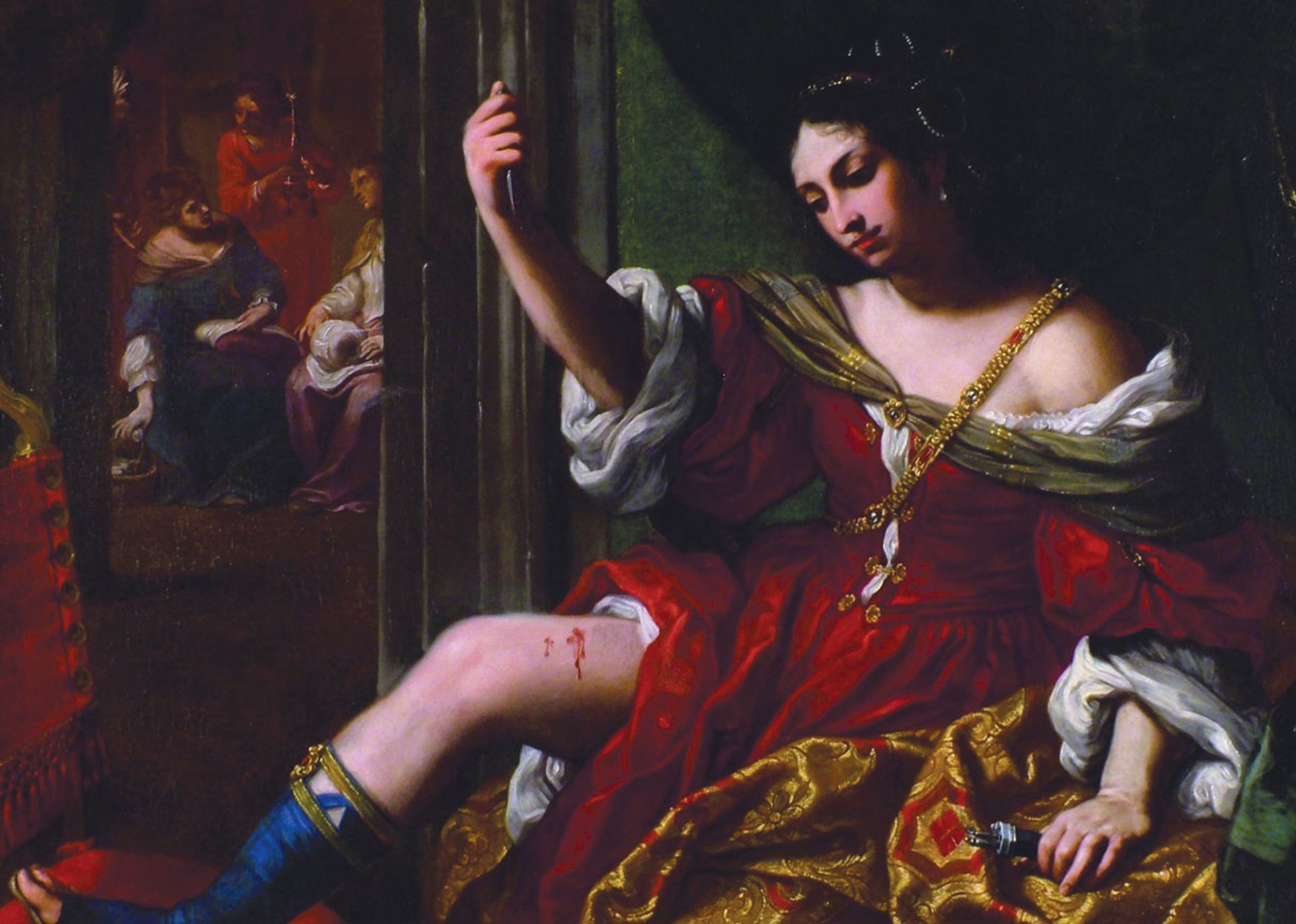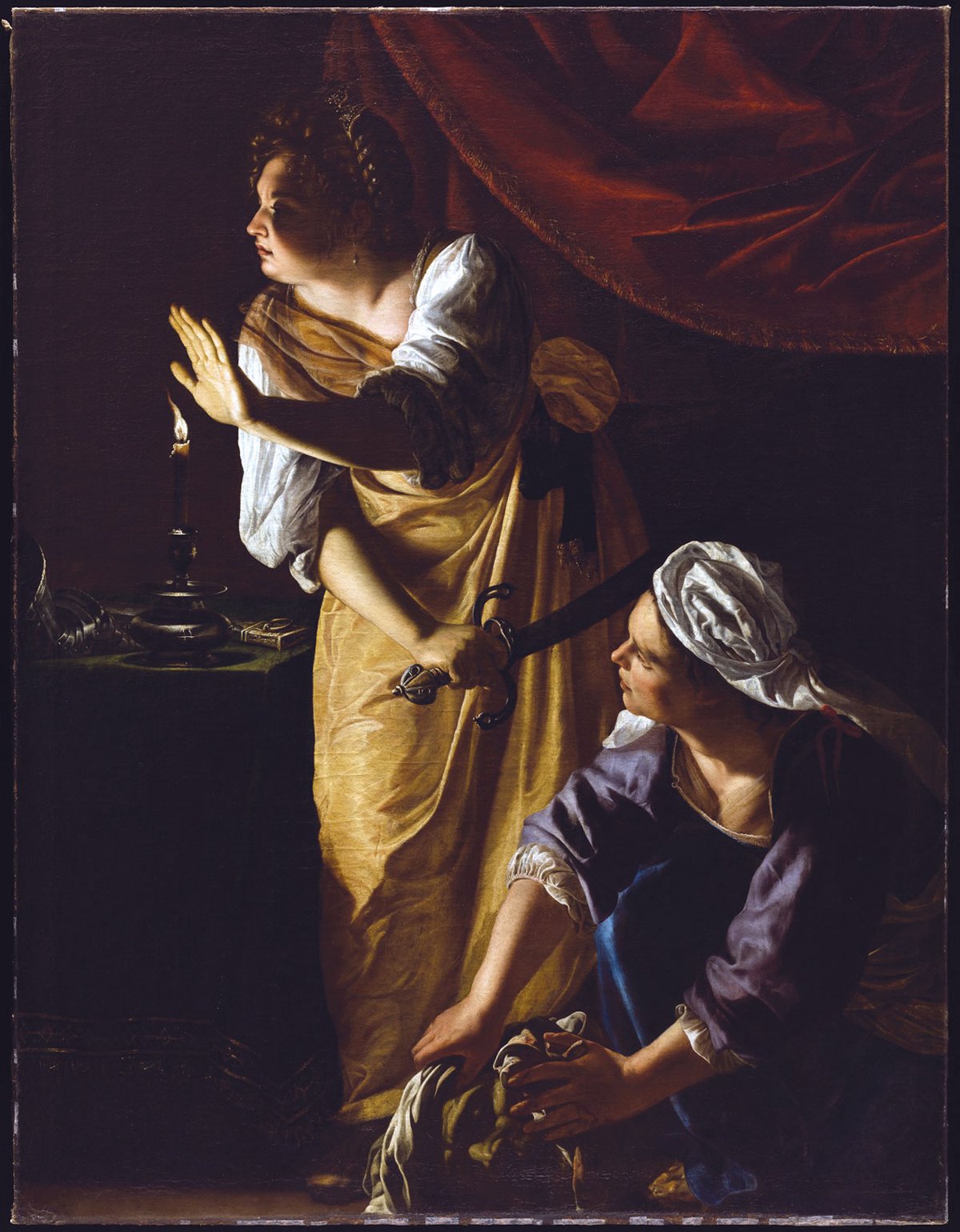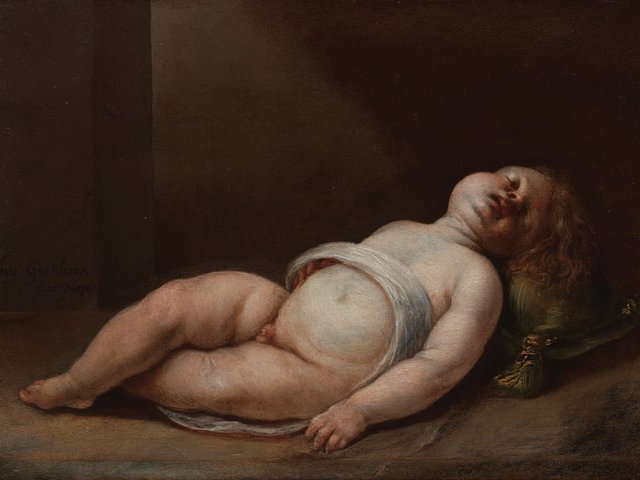“Le donne son venute in eccellenza di ciascun’arte ove hanno posto cura” (“Women have achieved excellence in every art where they have made an effort”) stated the 16th-century poet Ludovico Ariosto. Giorgio Vasari included this quote in the short biography of the Bolognese sculptor Properzia de’ Rossi for his celebrated Lives of the Most Excellent Painters, Sculptors, and Architects (1568). Despite Vasari’s avowed admiration for women artists, De’ Rossi was the sole woman to merit an entry among the hundreds of male artists he discusses.
There are, of course, historical reasons why women were underrepresented in art: they were shut out of workshops and life-drawing studios, while marital and familial obligations frequently prevented them from pursuing professional careers. By Her Hand: Artemisia Gentileschi and Women Artists in Italy, 1500-1800, building on decades of research, demonstrates that women artists were not such rarities. In fact, it is increasingly clear that they were both more numerous and more talented than previously suspected.
The book is uniquely conscious of its place in the historiography of the subject, avoiding essentialist claims
This concise but richly illustrated publication, edited by Eve Straussman-Pflanzer and Oliver Tostmann, accompanies the touring exhibition at the Wadsworth Atheneum, Hartford and Detroit Institute of Arts (until 9 January 2022 at the Wadsworth Atheneum). Although Artemisia takes the headline with seven works, both show and publication focus in no small part on other women artists. Some of these names—Sofonisba Anguissola, Lavinia Fontana or Giovanna Garzoni—will be familiar to an educated public. Others will be entirely new, such as the Roman printmaker Isabella Catanea Parasole, the Neapolitan wax sculptor Caterina de Julianis or the Florentine portraitist Anna Bacherini Piattoli.
A number of projects have focused on women artists but By Her Hand is uniquely conscious of its place in the historiography of the subject, avoiding the essentialist claims and mediocre works that have plagued some recent efforts. Instead, it presents essays and catalogue entries by scholars who have spent much of their careers thinking about these very issues. Straussman-Planzer provides a useful historiography of the intersection between feminism and art history in the US, alongside analysis of the unsurprisingly short history of exhibitions dedicated to early-Modern women artists. Tostmann’s essay, “The Advantages of Painting Small: Italian Women Artists and the Matter of Scale”, is an important examination of small-scale works by women artists, dispelling the myth of miniatures as inherently inferior. Instead, he demonstrates how women used the reduced format to experiment and innovate while allowing them to disseminate their works to a wider audience. Sheila Barker’s “Art as Women’s Work: The Professionalization of Women Artists in Italy, 1350-1800” shows that, due in no small part to limitations placed on their careers, the line between professional and amateur was often fluid for women artists. Some, like Artemisia and the Bolognese painter Elisabetta Sirani, ran major workshops. Others, like Plautilla Nelli and Orsola Maddalena Caccia, pursued unconventional career trajectories from within the convent or, like Lucrezia Quistelli, as aristocratic amateurs.

Elisabetta Sirani’s Portia Wounding her Thigh (1664) is among a number of works by the Bolognese painter to feature in the touring show, currently at the Wadsworth Atheneum Courtesy of Collezioni d’Arte di Storia della Fondazione Cassa di Risparmio
Among the represented artists, Artemisia is naturally front and centre, the show-stealer being her masterpiece Judith and Her Maidservant with the Head of Holofernes, (around 1623-25, Detroit Institute of Art). Sirani, prolific despite her untimely death, is also well represented with paintings and drawings including the powerful Portia wounding her Thigh (1664), as is the star of Grand Tour portraiture, Rosalba Carriera. Inevitably in the current climate, certain loans could not materialise, which means readers interested in De’ Rossi, Nelli, the Venetian painter Giulia Lama, the Bolognese wax artist Anna Morandi or the full range of Anguissola’s talent will have to look elsewhere. These limitations aside, the essays hint at a vast range of forgotten talents and provide an essential contribution to a growing field.
• Eve Straussman-Pflanzer and Oliver Tostmann, eds, By Her Hand: Artemisia Gentileschi and Women Artists in Italy, 1500-1800, Detroit Institute of Art/Yale, 208pp, 141 colour and black-and-white illustrations, £30/$40 (hb), published UK/US October/November
• Jesse Locker is professor of Italian Renaissance and Baroque art at Portland State University and author of Artemisia Gentileschi: The Language of Painting (Yale University Press, 2015)




